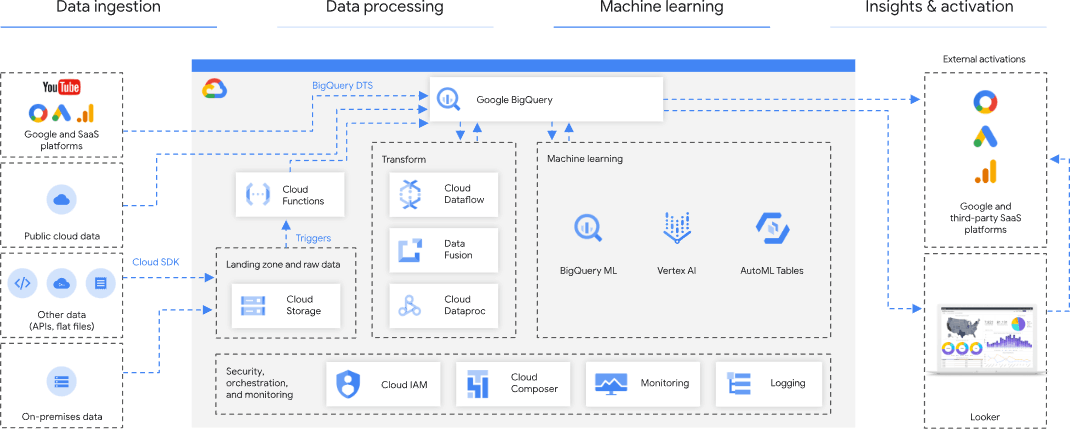- Published on
Google Cloud Platform Fundamentals and Architecture A Comprehensive Guide
- Authors

- Name
- Adil ABBADI
Introduction
Google Cloud Platform (GCP) stands as one of the leading cloud service providers, empowering organizations to innovate, scale, and deliver robust applications with global reach. Understanding GCP's essential architecture and foundational concepts is crucial for leveraging its full potential, from compute and storage services to advanced machine learning capabilities.

- Core Architectural Principles of GCP
- Key Google Cloud Platform Services
- Designing a Reliable GCP Architecture
- Conclusion
- Ready to Dive Deeper?
Core Architectural Principles of GCP
GCP is built on a global network designed for speed, resilience, and scalability. Its architecture enables developers to focus on code and configuration, while Google handles infrastructure management, redundancy, and security. Let's break down the foundational principles:
- Global Infrastructure: GCP uses regions and zones to ensure resources are highly available and distributed.
- Managed Services: From databases to serverless computing, GCP offers fully managed platforms.
- Security First: In-depth security controls, encryption, and identity management are integrated at every layer.

Example: Defining a Compute Engine Instance
This example shows how to define a virtual machine using gcloud CLI:
gcloud compute instances create gcp-demo-vm \
--zone=us-central1-a \
--machine-type=e2-medium \
--image-family=debian-11 \
--image-project=debian-cloud
Key Google Cloud Platform Services
GCP consists of modular services that can be mixed and matched according to your architectural needs. Here are some fundamental services:
- Compute Engine: Scalable virtual machines for custom workloads.
- App Engine: Fully managed platform for app hosting.
- Kubernetes Engine (GKE): Managed Kubernetes clusters for containerized applications.
- Cloud Storage: Unified object storage for diverse data.
- BigQuery: Serverless data warehouse for analytics.

Example: Deploying a Simple App on App Engine
A app.yaml config for a Python web app:
runtime: python39
entrypoint: gunicorn -b :$PORT main:app
handlers:
- url: /.*
script: auto
Next, deploy with:
gcloud app deploy
Designing a Reliable GCP Architecture
Architecting on GCP isn’t just about choosing the right services—it’s about building robust, scalable, and cost-optimized solutions. Consider these best practices:
- Redundancy and Failover: Spread critical workloads across multiple zones/regions.
- Auto-scaling: Use managed instance groups and serverless options to handle variable load.
- Security and IAM: Apply least-privilege access via Cloud IAM.
Example: Setting Up a Managed Instance Group
This command creates a group that auto-scales your VMs:
gcloud compute instance-groups managed create web-app-group \
--base-instance-name web-app \
--size 2 \
--template web-app-template \
--zone us-central1-a
Enable auto-scaling:
gcloud compute instance-groups managed set-autoscaling web-app-group \
--max-num-replicas 5 \
--min-num-replicas 2 \
--target-cpu-utilization 0.60 \
--zone us-central1-a
Conclusion
Mastering Google Cloud Platform's fundamentals and architecture empowers engineers to design secure, reliable, and efficient cloud-native applications. By harnessing the right services and architectural best practices, organizations can accelerate innovation and realize true cloud agility.
Ready to Dive Deeper?
Start experimenting with GCP’s free tier or take an official Google Cloud training course to further expand your skills and transform your digital solutions!
